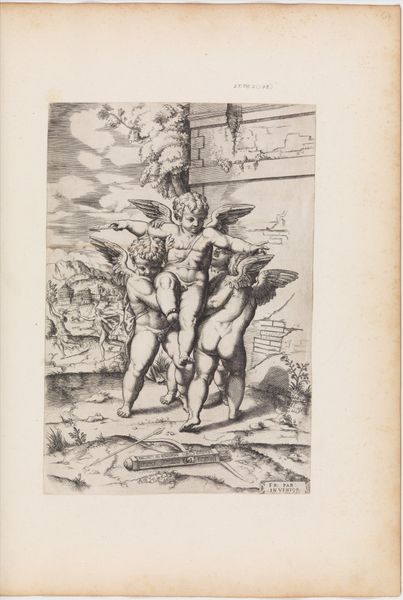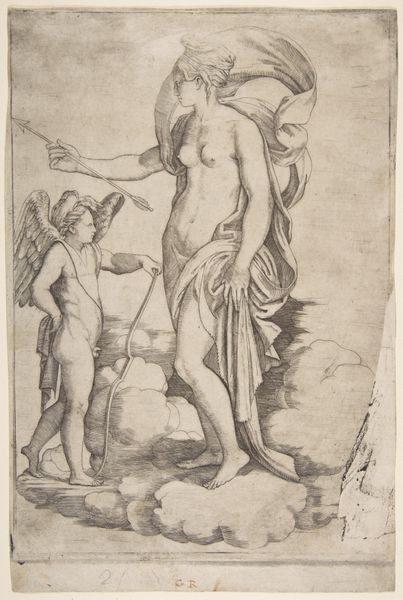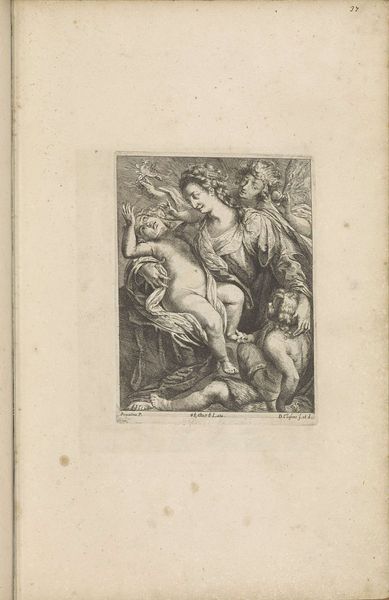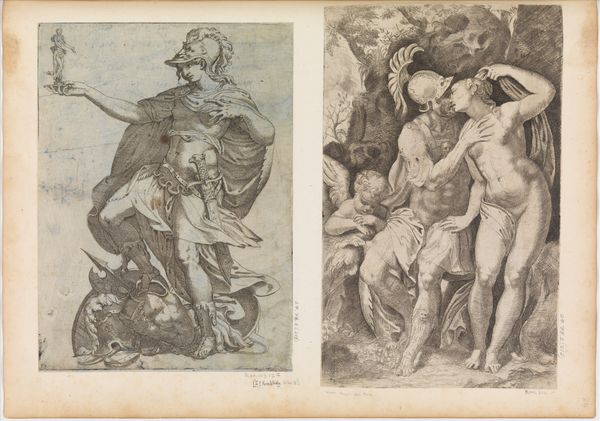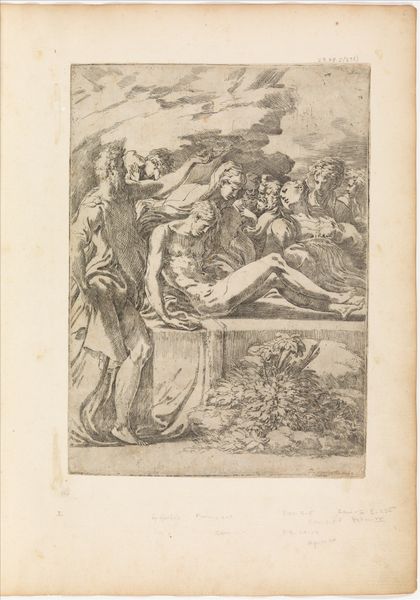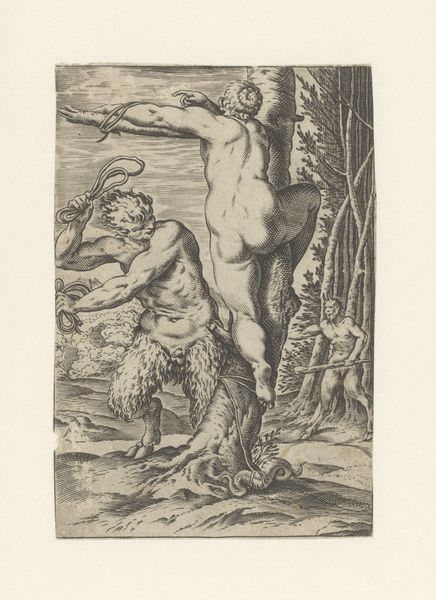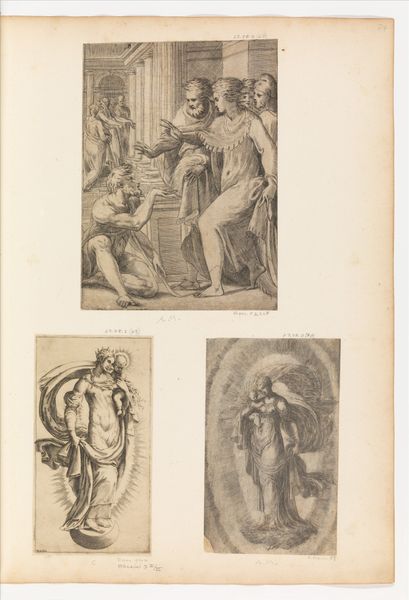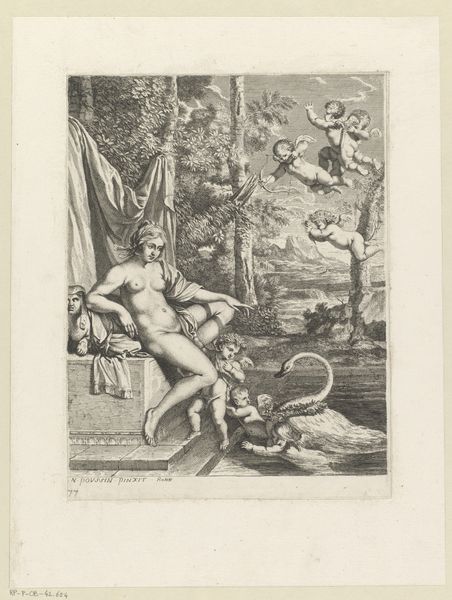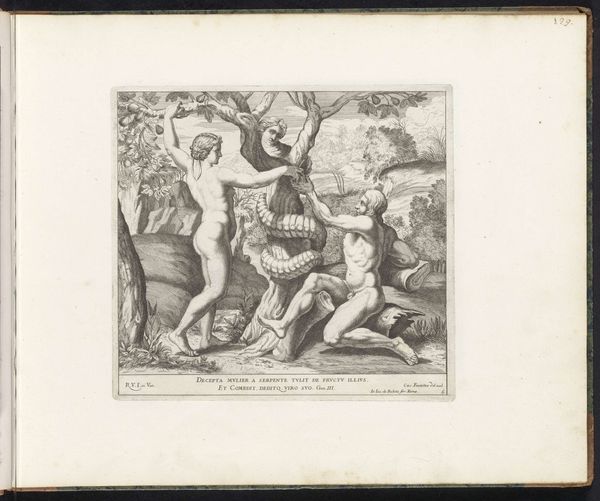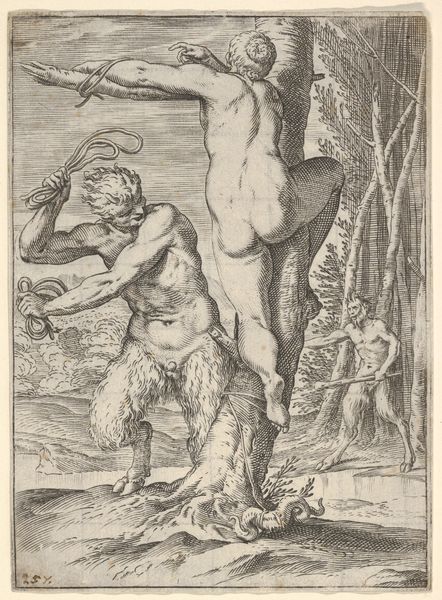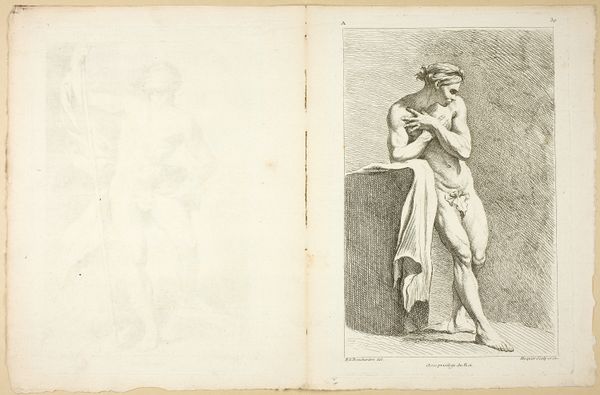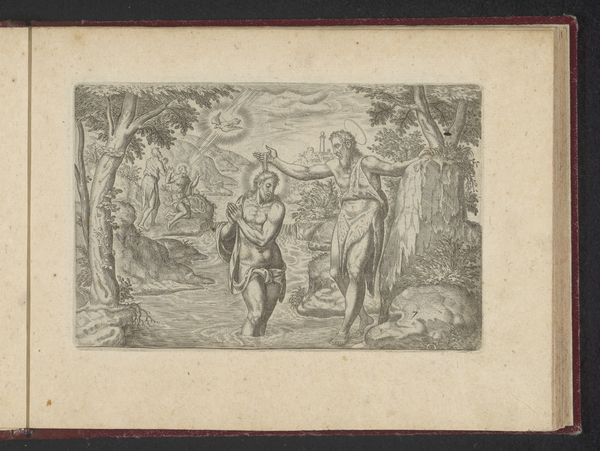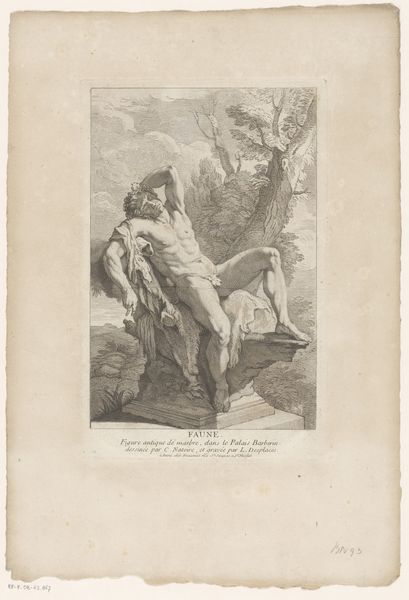
drawing, print, etching
#
drawing
#
allegory
# print
#
etching
#
figuration
#
cupid
#
italian-renaissance
#
nude
Dimensions: Sheet: 11 13/16 × 8 3/8 in. (30 × 21.3 cm)
Copyright: Public Domain
Curator: This intriguing print is titled *Venus and Cupid* and comes to us from the Italian Renaissance, created sometime between 1520 and 1530 by Giacomo Francia. Editor: It’s striking how the figures emerge so directly from the cloud forms. It gives the work a wonderfully ethereal yet immediate presence. Curator: Yes, there is an inherent power in the classical subjects depicted within. Venus, the Roman goddess of love, beauty, and desire, alongside her son Cupid who, of course, is widely known as the god of affection and attraction. Editor: Speaking to structure, consider the vertical emphasis. The upward gaze Venus directs guides our eye heavenward, reinforced by the flowing drapery behind her, creating a dynamic contrast with the grounding cloud beneath her feet. The artist has established the semiotic framework around Venus by subtly presenting her control over the very figure of Love. Curator: Certainly. Note how Venus holds the arrow, an iconic symbol often wielded by Cupid. Here, it subverts expectation—it signifies a layer of dominance and speaks to her multifaceted role as not only a mother but also the orchestrator of passion itself. Her gaze doesn’t suggest tender warmth; it’s cool, assessing. Editor: The monochromatic etching really allows the textural variations to shine; from the smooth, idealized skin of Venus, contrasted to the feathery lightness suggested in Cupid's wings. These textural contrasts speak volumes. Curator: Beyond pure visual aesthetics, this piece offers insights into Renaissance perceptions of love—often complex and not solely defined by sentimental affections. Here, it is almost as if divine beauty and impulse meet, which may challenge some present-day understandings. Editor: I agree completely; this print invites closer observation that unfolds over time through shape, form, and shading to subtly influence emotional meaning. Curator: Indeed, reflecting on this work highlights not only Francia’s artistic talent but also cultural attitudes of that period regarding romance, motherhood, and godly authority. Editor: Yes, an example of how studying the formalism unlocks such potential for broader iconographical interpretations, and vice versa.
Comments
No comments
Be the first to comment and join the conversation on the ultimate creative platform.
